
The Guyot Walk is a hidden gem of natural serenity located in the center of Princeton. The path is named for a former Princeton resident, Arnold Guyot (pronounced ghee-YO), who taught geology at Princeton University. It shelters a dose of unrestrained greenery and has long provided a shortcut to school for biking children, a break for families, and dog walkers. For years it has been lovingly cared for by neighbors and enjoyed by the community. This year, a number of community-wide workdays were planned to help with invasive species removal and native plantings.
Visit Guyot Walk
Located between Carnahan Place and Moore Street, and accessible at Jefferson Road and Harris Road. Guyot walk is pictured in the Google map below as a green line on Guyot Ave:
Fall 2024
Guyot Path neighborhood leaders organized another fall workday to plant more native shrubs and trees along the path on Saturday, October 19. There were 7 trees of 6 different native species and 10 shrubs of 6 native species planted, the full list is below. Volunteers also removed more invasive honeysuckle.
The trees and shrubs were generously provided by Princeton Public Schools, and 7 PPS students helped as part of their community service requirements. Neighbors have a watering plan to ensure the trees and shrubs receive the water they need to get established, which is especially important during the current drought. Sustainable Princeton helped with student volunteer management.
Make sure to stop by Guyot Walk to see the new trees and shrubs and enjoy the fall foliage.
| TREES | ||
| 1 | Acer rubrum Redpointe | Red Maple |
| 1 | Amelanchier laevis | Alleghany Serviceberry |
| 1 | Carpinus caroliniana | American Hornbeam |
| 1 | Cercis canadensis | Eastern Redbud |
| 1 | Cornus alternifolia | Pagoda Dodwood |
| 2 | Magnolia virginiana | Sweetbay Magnolia |
| SHRUBS | ||
| 2 | Calycanthus floridus | Sweetshrub |
| 1 | Cornus racemosa | Gray Dogwood |
| 3 | Fothergilla gardenii | Dwarf Fothergilla |
| 1 | Hamamelis vernalis | Vernal Witchhazel |
| 1 | Hamamelis virginiana | Common Withhazel |
| 2 | Lindera benzoin | Spicebush |


Fall 2023
Fall plantings took place on Saturday, September 30 and Sunday, October 1. Neighbors removed invasive plants and planted the following native plants and trees:
| Botanical Name | Common Name |
| Amelanchier × grandiflora “Autumn Brilliance” | Serviceberry |
| Anemone canadensis |
Canada anemone |
| Aronia arbutifolia “Brillantissima” |
Red chokeberry |
| Clethra alnifolia “Sixteen Candles” |
Summersweet |
| Cornus Florida “Cherokee Princess” |
Flowering Dogwood |
| Dryopteris marginalis |
Evergreen Wood Fern |
| Geranium maculatum |
Cranesbill – Spotted |
| Ilex glabra “Densa” |
Inkberry Holly |
| Ilex opaca “Dan Fenton” | Dan Fenton American Holly |
| Ilex verticillata “Red Sprite” |
Red Sprite Winterberry |
| Lindera benzoin |
Spicebush |
| Lobelia cardinalis |
Cardinal flower |
| Matteuccia struthiopteris | Ostrich Fern |
| Myrica pensylvanica |
Bayberry |
| Packera aurea |
Golden Groundsel |
| Polystichum acrostichoides |
Christmas Fern |
| Rhododendron maximum |
Roseum rosebay rhododendron |
| Sambucus canadensis “Adams” |
Elderberry |
| Solidago sphacelata “Golden Fleece” |
Goldenrod |
| Viburnum prunifolium |
Blackhaw Viburnum |
Make sure to stop by Guyot Walk this fall to enjoy the autumn foliage.


May 2023
The second spring workday took place on Saturday, May 13, and both neighbors and volunteers planted a variety of native plugs and trees and removed invasives like Norway maple Acer platanoides and Japanese honeysuckle Lonicera japonica. The following native varieties were planted: American Witch-Hazel Hamamelis virginiana, Highbush blueberry Vaccinium corymbosum, Blackhaw Viburnum prunifolium, American Beech Fagus grandiflora, White Wood Aster Eurybia divaricata, White snakeroot Ageratina altissima, Heartleaf foamflower Tiarella cordifolia and Golden Ragwort Packera aurea.

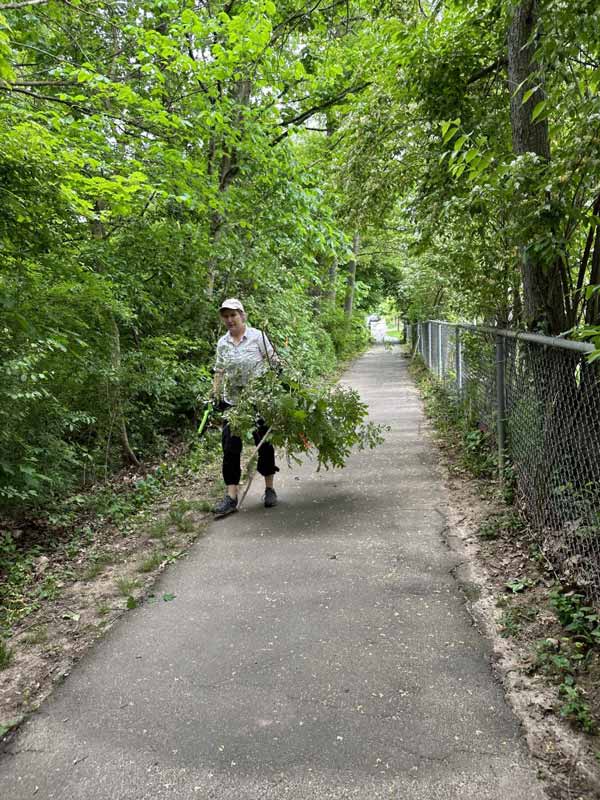



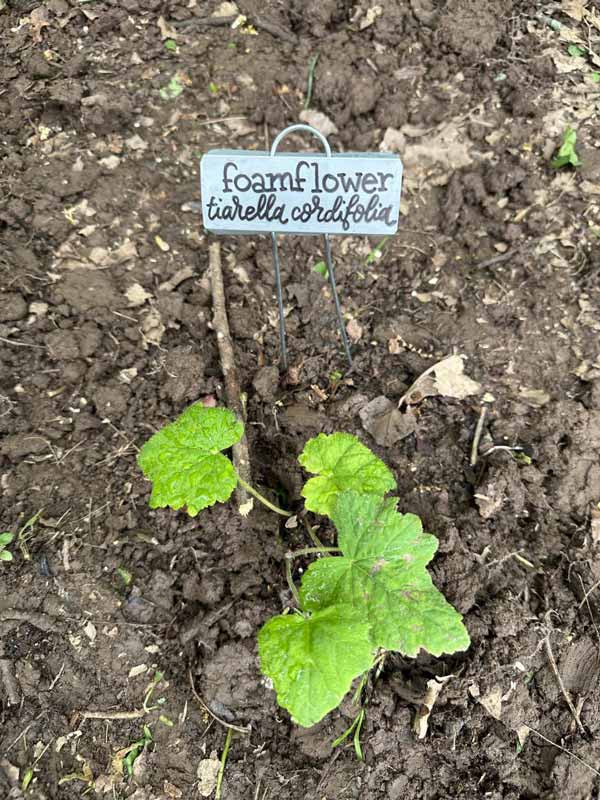

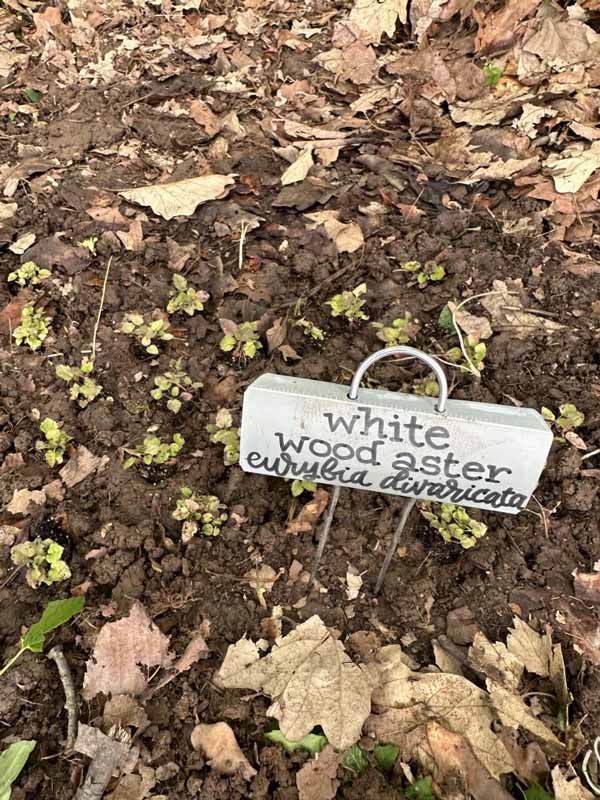

April 2023
On Saturday, April 1, 2023 the neighborhood hosted the first community-wide workday. About 20 residents, directed by neighbors familiar with species identification, dug out the yellow Lesser Celandine (Ficaria verna) and replaced them with native flowers and shrubs.
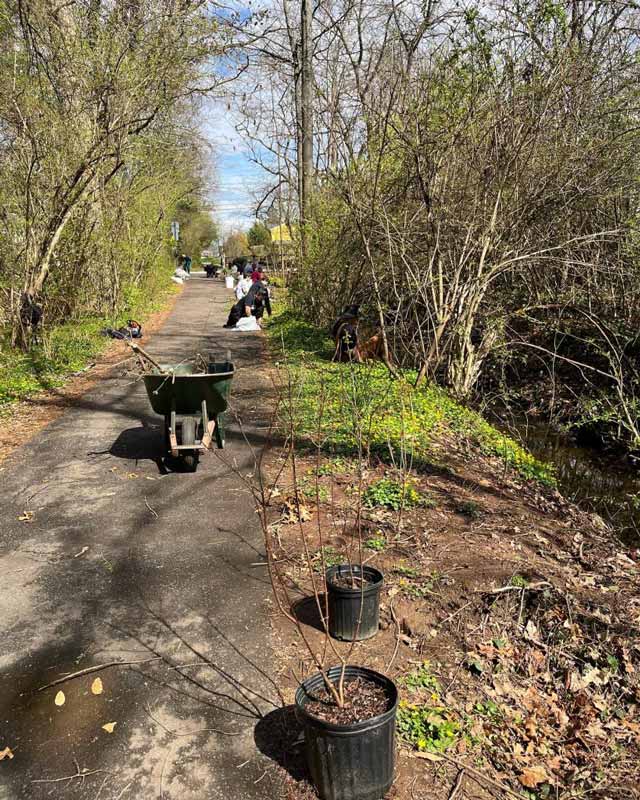


A total 124 native plants were planted including the following varieties: Shooting star (Primula meadia), Wild blue phlox (Phlox divaricata), Wild ginger (Asarum canadense), American Beech (Fagus grandiflora), Black Gum (Nyssa sylvatica), Nannyberry Viburnum (Viburnum lentago), Possumhaw Viburnum (Viburnum nudum), and Virginia bluebell (Mertensia virginica). Watch for the flowers at the junction of Harris Road and Guyot Walk—they should bloom in early summer. All species are hardy and chosen for their potential to out-compete the celandine.


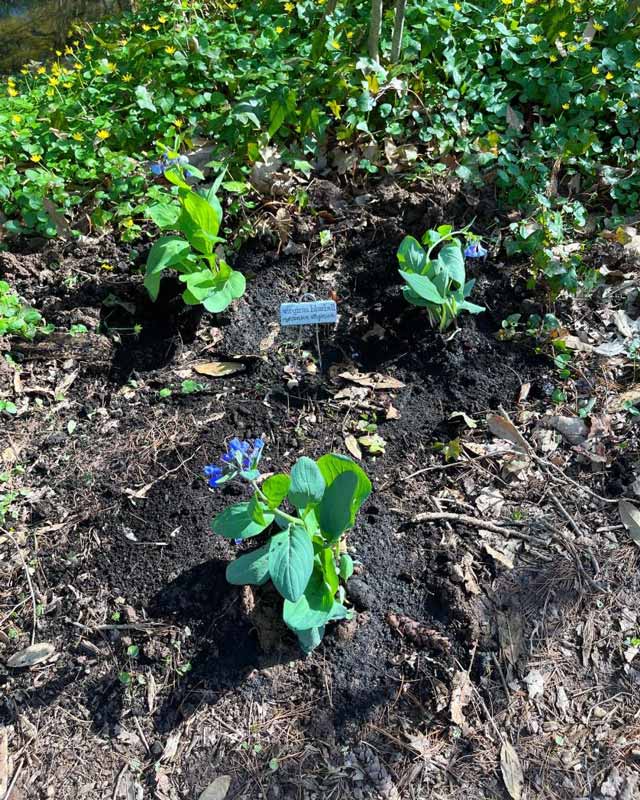
The project has been supported by Princeton Municipality’s Open Space Manager, Cindy Taylor, with plants, contacts, and expert advice; the Municipal Arborist, Taylor Sapudar, who replaced diseased ash trees with oaks and redbuds; Princeton Public School Facilities Department, who saw to the removal of rubber crumb that spilled into the brook and equipment along the fence; and Princeton Public Works, who emptied the trash.
